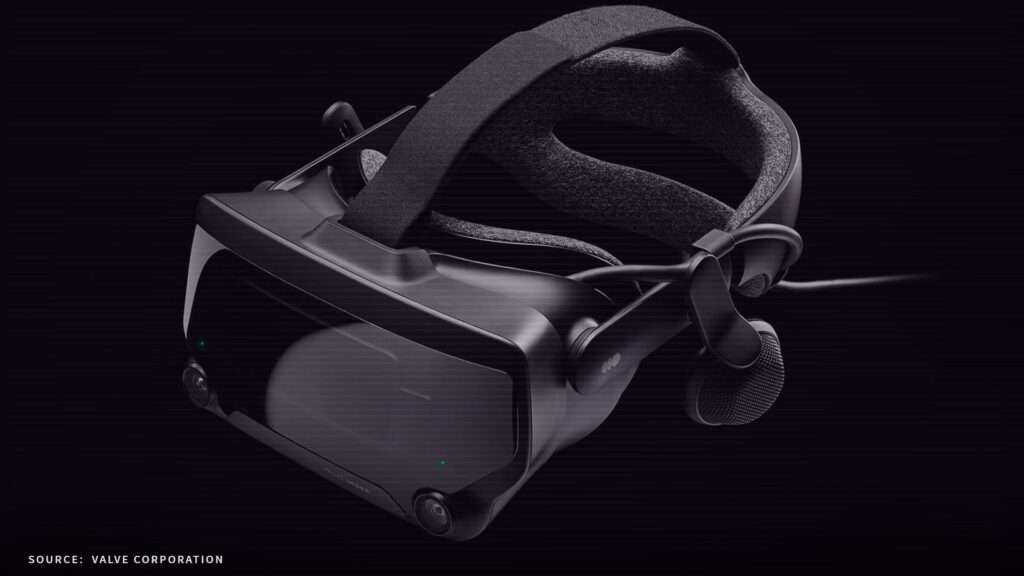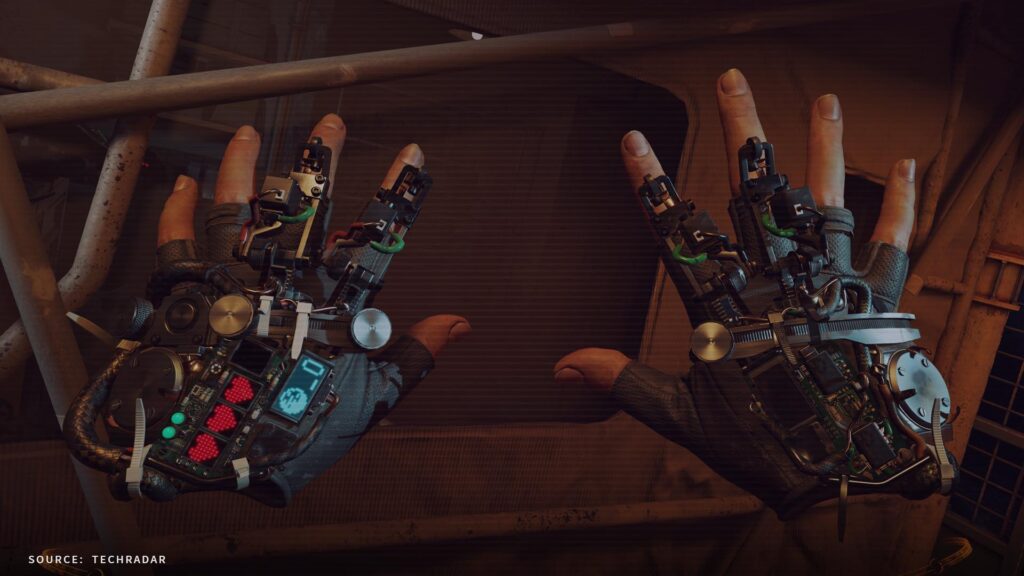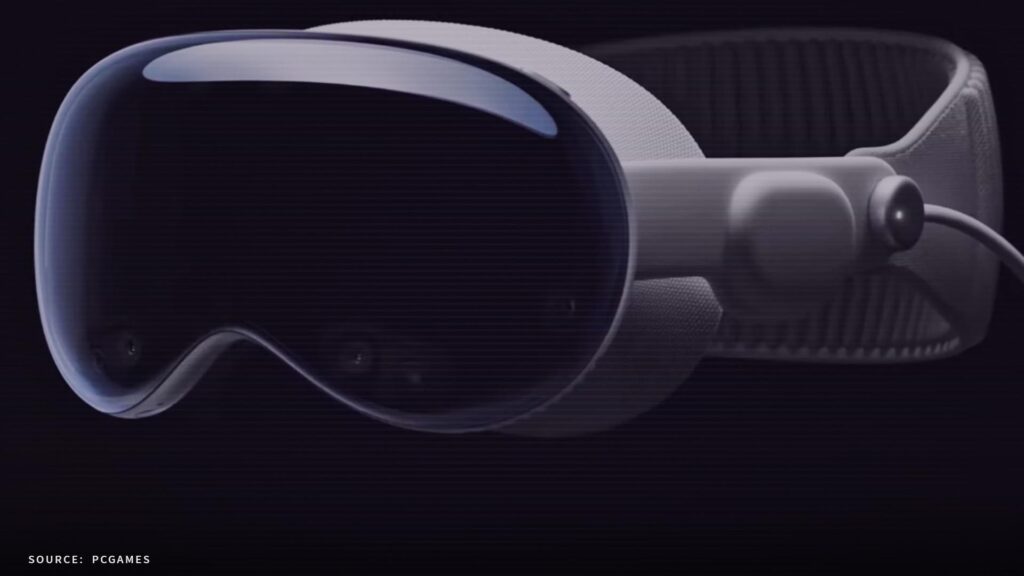VR gaming has come a long way in recent years and yet it’s still persisting in a niche corner, with untapped potential for further innovation and expanded mainstream appeal. While devices like Oculus Quest 2 and Valve Index have driven growing consumer adoption and game development, VR gaming is still maturing as an overall industry and experience in itself. Key areas that suggest room for continued VR gaming growth include hardware limitations that constrain immersion and comfort, like relatively low display resolutions, limited field of view, and unwieldy headset and controller designs. Multiplayer gaming and social experiences remain underdeveloped compared to standard console and PC gaming, which is closely connected to accessibility challenges posed by high headset prices and the need for gaming PCs/consoles.
Another fact to remember is that the overall content depth has not yet caught up with the breadth of traditional AAA gaming catalogs. More full-length VR-native titles could help the platform evolve beyond tech demos, which is not to say that there aren’t great games like Half-Life: Alyx. Finally, the majority of VR marketing leads to a mixed consumer perception that gaming in virtual reality is very much a novelty, an elitist niche technology. The announcement and quick unavailability of the Apple Vision Pro seems to disprove this point but Apple aims for a very different target audience. Instead, if we look at the current state of VR gaming, major leading platforms today include the aforementioned Oculus Quest 2, PlayStation VR, and Valve Index, among others.


To give a brief overview: The Oculus Quest 2 is a completely wireless and self-contained headset with solid performance and an approachable $299 price point. It features good displays, inside-out tracking, and motion controllers, providing an accessible entry point for many consumers. However, its mobile hardware still lags behind PC-powered headsets. PlayStation VR similarly helps lower the barrier to entry by integrating with the popular PlayStation 4 console and offers players access to VR alongside an established game catalog. It also works on the PS5 but becomes obsolete in regards to innovations with the release of PS VR2. On the high end, the Valve Index offers premium displays, excellent controllers with finger tracking and support for room scale experiences with external beacons. Yet it also requires a powerful gaming PC and costs over $1000. In summary, current mainstream VR gaming is defined by this spectrum of options balancing affordability with performance. Key strengths today include the wireless freedom of standalone headsets like Quest and the benefit of leveraging existing gaming platforms like PlayStation.
Hardware improvements could help take VR gaming to the next level. Fully wireless, self-contained headsets remove cable constraints and open up more active, room-scale experiences; Higher resolution displays with expanded fields of view would make VR visuals more immersive and comfortable. Reduced headset size, weight and refresh rates of 90/120Hz or above could help to minimize motion sickness issues and create a more seamless, natural experience. However, as a video game host we’re of course thinking of gameplay, features and functionality that would also allow VR gaming to mirror the connected multiplayer experiences that drive engagement in traditional gaming. There are great examples like No Man’s Sky VR and The Forest VR but neither of these seem to drive the willingness of more studios investing in ambitious projects. In other words: The industry needs flagship VR games with engrossing narratives, full-length gameplay and high production values to showcase the medium’s strengths beyond novelty.

Now, does the Apple Vision Pro fill the gaps and move Virtual Reality to the next level? Yes, and no. With its focus on high-resolution displays, spatial audio, and expansive feature set, the Vision Pro is more clearly geared toward creative professionals, enterprises, and consumers of immersive digital media. Gaming does not appear to be a core emphasis – the device is not marketed as a gaming platform and lacks certain features that gamers would expect like dedicated gaming-grade processors or specialized motion controllers. Not exactly surprising if we’re thinking of Apple’s recent history when it comes to videogames. The Steam macOS category lists thousands of games but the narrative that there are neither games for Mac nor people willing to play is ubiquitous ─ for reasons.
The announced $3499 price point positions the Vision Pro as an ultra premium device rather than an accessible mainstream gaming headset. This likely puts it out of reach for many gamers looking for a VR solution solely for playing games. Instead it seems to become ─ or at least is trying to become ─ a tool for developers, mind you not only for video games. For consumers focused specifically on VR gaming, existing platforms like the Meta Quest 2, Valve Index or PlayStation VR still seem better positioned to meet their needs at more affordable price points. These offer gaming-centric hardware, integrated platforms and controller designs built with gaming in mind. The Vision Pro may eventually enable gaming through general productivity and app capabilities but, based on information currently available, it does not appear to directly address the key improvement areas we’ve addressed earlier: wireless freedom, immersive hardware, social features and flagship gaming content that would take VR gaming itself to the next level.
Still, every improvement and innovation that Apple brings to the table is a step in the right direction. Although not directly targeting gaming in its current form, Apple’s entry into the VR/AR space could still benefit VR gaming indirectly, simply by sparking broader consumer interest in these technologies, which could in turn translate into more immersive single- and multiplayer experiences for the VR-market. Apple is also uniquely positioned to potentially turn VR/AR into more of a mainstream phenomenon given its brand cachet, design prowess, and ability to make new technology accessible to average users. If the Vision Pro catalyzes wider adoption of immersive headsets in general, this rising tide could lift VR gaming alongside other applications. Display quality, processing power, battery efficiency and spatial computing platforms powering a device like the Vision Pro will also influence next generation gaming VR headsets.

Of course, VR gaming still faces a longer road to truly widespread mainstream integration comparable to traditional gaming. We’re not talking about big VR esports leagues and tournaments centered around multiplayer competitive VR titles. These would be nice to have but, so far, like putting the cart before the horse. The Vision Pro and Apple’s entry into the AR/VR space could drive future technical improvements that benefit VR gaming appeal and capabilities over the longer term. Apple’s penchant for user-friendly design and ability to catalyze interest in new technology could slowly help expand the VR gaming market beyond just early adopters if the Vision Pro sparks wider VR/AR adoption.
For most mainstream consumers interested primarily in VR gaming right now, existing platforms like Meta Quest 2 or PlayStation VR are likely better options than the upcoming Apple Vision Pro. These headsets have more approachable price points under $500, are designed specifically with gaming in mind, and have access to established VR game libraries. Multiplayer VR games thrive when players on competing headsets can all play together, enabling (more) cross-play between Oculus, Vive, Index, and PSVR users ensures robust matchmaking, connects friends, and builds lasting player networks.linked to hardware. This however depends on open standards and cooperation between companies.

















